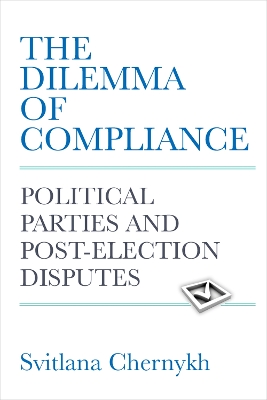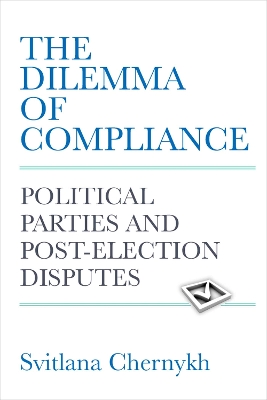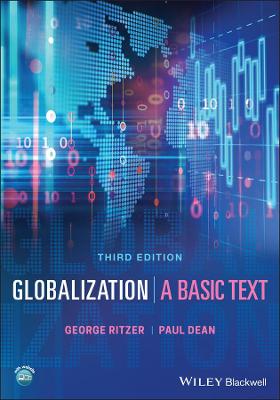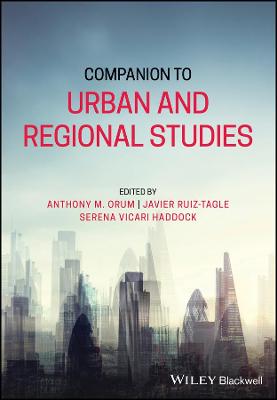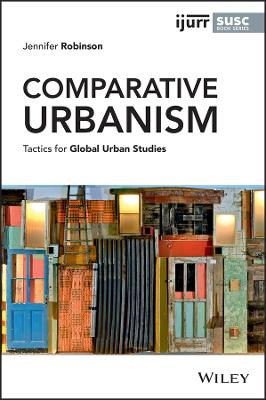Global Issues
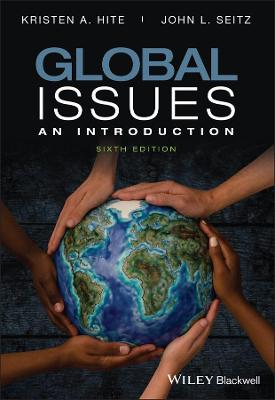 -15%
portes grátis
-15%
portes grátis
Global Issues
An Introduction
Hite, Kristen A.; Seitz, John L.
John Wiley and Sons Ltd
02/2021
400
Mole
Inglês
9781119538509
15 a 20 dias
756
Descrição não disponível.
List of Plates xiii
List of Figures, Maps, and Tables xv
Acknowledgements xix
Introduction 1
The Creation of Global Issues 1
1 What is Development? 3
Developing Toward What? 3
Twentieth-Century Approach: Development as Economic Growth 4
Twenty-First-Century Approach: Developing towards Sustainability 6
Wave of Hope: The Millennium Development Goals (2000-2015) 7
Sustainable Development Goals (2015-2030) 8
Development Assistance and Foreign Aid 10
Culture and Development 14
Conclusion 16
Notes 18
Further Reading 19
2 Wealth and Poverty 21
Can We Eradicate Poverty? 23
Mainstreaming Sustainable Development 27
A Pessimistic View: The Persistence of Poverty 29
Systematic Approaches 33
A Market Approach 33
The State as Economic Actor 36
A Blended Approach 40
Trade and Global Economic Interdependence 41
Global Interdependence 43
Positive aspects 43
Negative aspects 44
Geography and Wealth, Geography and Poverty 45
Conclusions 46
Notes 48
Further Reading 52
3 Population 55
The Changing Population of the World 56
Shifting Demographics: Rural to Urban 61
Causes of the Population Explosion 67
Demographic transitions: population and development 68
How Population Growth Affects Development 74
Rapid growth 74
Slow growth 76
An aging population and low birth rates 76
How Development Affects Population Growth 79
Factors lowering birth rates 80
International Conferences on Population 82
Governmental Population Policies 84
Managing growth 84
Mexico 86
India 88
China 88
Promoting growth 89
The Future 92
The growth of the world's population 92
The carrying capacity of the Earth 92
"Optimum" size of the Earth's population 94
Population-related challenges in our future 96
Conclusions 98
Notes 99
Further Reading 105
4 Food 108
How Many Are Hungry? 109
World Food Production 110
Arable land 111
Climate 112
How Development Affects Food 113
United States: Industrial Agriculture and Farm Consolidation 114
Brazil: Becoming a Food Exporter by Expanding the
Agricultural Frontier 116
Contents ix
China: Limited Land to Grow, Many Mouths to Feed 116
Feeding a Growing Population 118
The "Green" Revolution 119
Fertilizers 120
Pesticides 121
Energy 121
Irrigation 122
Biotechnology 122
Fishing and aquaculture 125
Traditional/sustainable/organic agriculture 126
Causes of World Hunger 128
How Food Affects Development 132
The type of food 134
What's your Footprint? 138
Food Waste and Food Loss 139
The Future 140
Governmental Food Policies 141
Future Food Supplies 143
Conclusions 145
Notes 146
Further Reading 156
5 Energy 158
The Relationship between Energy Use and Development 159
Nonrenewable Energy Sources 161
Oil 162
Global Oil Supplies and Price Shocks 163
Coal 165
Natural Gas 166
The Energy Transition 167
Renewable Energy Sources 169
Solar Power 169
Wind 171
Hydroelectric Power 172
Wood, Agricultural/Forestry Residues, and Animal Dung 173
Geothermal Energy 174
Hydrogen-Powered Fuel Cells 175
Energy and Development: Critical Challenges and Opportunities 176
National Approaches to Energy and Development 177
China 179
The United States 180
Western Europe 183
Japan 184
The Decoupling of Energy Consumption and Economic Growth 185
Conservation/Energy Efficiency 186
x Contents
Nuclear Power: A Case Study 188
The potential and the peril 188
The choice 192
Withdraw support for nuclear power 192
Continue to support nuclear power 194
Conclusions 195
Notes 196
Further Reading 201
6 Climate Change 203
An Unprecedented Global Challenge 204
How Increased Temperatures Impact the Earth 206
Regional impacts 206
Africa 207
Asia 207
Low-lying islands 207
Europe 207
Latin America 207
North America 207
Polar regions 207
Types of impacts 209
Monster storms 209
Extreme heat 210
Infectious diseases 210
Agriculture 210
Melting ice 212
Sea level rise 212
Disruption of natural ecosystems 213
How Bad Will It Get? 213
Planet at a crossroads: high stakes choices 215
Air pollution 215
Uncertainties 216
Abrupt climate change 216
Slower Atlantic currents 216
Clouds 216
Other positive and negative feedbacks 216
Global Agreement for a Global Problem 217
What More Can Be Done? 218
Conclusion 221
Notes 221
Further Reading 223
7 The Environment: Natural Resources 225
The Awakening 225
Water 228
Contents xi
Land 229
Minerals 229
Deforestation 230
Governing the Commons 235
The Extinction of Species 236
Responsible Use 240
Resource efficiency 240
Recycling 241
Substitution 243
Reducing needs 243
Conclusion 244
Notes 244
Recommended Readings 248
8 The Environment: Pollution 249
Air Pollution 250
Acid rain 254
Ozone depletion 258
Climate change (global warming) 260
Water Pollution 261
The Workplace and the Home 263
Cancer 263
Chemicals 264
Pesticides 265
Managing Waste 267
Solid wastes 267
Toxic wastes 269
Governmental and industrial responses to the waste problem 270
Environmental Politics 271
Conclusion 274
Notes 275
Further Reading 282
9 Technology 283
Benefits of Technology 284
Unanticipated Consequences of the Use of Technology 285
DDT 287
Factory farms 288
Inappropriate Uses of Technology 289
Limits to the "Technological Fix" 294
War 296
The Threat of Nuclear Weapons: A Case Study 298
The threat 298
New dangers 301
Nuclear proliferation 301
The cleanup 303
The threat of nuclear terrorism 303
xii Contents
Conclusions 304
Notes 305
Further Reading 308
10 Alternative Futures 310
Development Pathways: Evaluating Our Current Situation 311
Current Outlook: Business as Usual 312
Collapse and Sustainable Development 314
Choices 318
Improve production 318
Reduce demand 319
Governance: Deciding How to Act on the Choices We Make 320
Conclusion 324
Notes 326
Further Reading 330
Appendix 1: Studying and Teaching Global Issues 332
Appendix 2: Relevant Videos 340
Glossary 349
Index 355
List of Figures, Maps, and Tables xv
Acknowledgements xix
Introduction 1
The Creation of Global Issues 1
1 What is Development? 3
Developing Toward What? 3
Twentieth-Century Approach: Development as Economic Growth 4
Twenty-First-Century Approach: Developing towards Sustainability 6
Wave of Hope: The Millennium Development Goals (2000-2015) 7
Sustainable Development Goals (2015-2030) 8
Development Assistance and Foreign Aid 10
Culture and Development 14
Conclusion 16
Notes 18
Further Reading 19
2 Wealth and Poverty 21
Can We Eradicate Poverty? 23
Mainstreaming Sustainable Development 27
A Pessimistic View: The Persistence of Poverty 29
Systematic Approaches 33
A Market Approach 33
The State as Economic Actor 36
A Blended Approach 40
Trade and Global Economic Interdependence 41
Global Interdependence 43
Positive aspects 43
Negative aspects 44
Geography and Wealth, Geography and Poverty 45
Conclusions 46
Notes 48
Further Reading 52
3 Population 55
The Changing Population of the World 56
Shifting Demographics: Rural to Urban 61
Causes of the Population Explosion 67
Demographic transitions: population and development 68
How Population Growth Affects Development 74
Rapid growth 74
Slow growth 76
An aging population and low birth rates 76
How Development Affects Population Growth 79
Factors lowering birth rates 80
International Conferences on Population 82
Governmental Population Policies 84
Managing growth 84
Mexico 86
India 88
China 88
Promoting growth 89
The Future 92
The growth of the world's population 92
The carrying capacity of the Earth 92
"Optimum" size of the Earth's population 94
Population-related challenges in our future 96
Conclusions 98
Notes 99
Further Reading 105
4 Food 108
How Many Are Hungry? 109
World Food Production 110
Arable land 111
Climate 112
How Development Affects Food 113
United States: Industrial Agriculture and Farm Consolidation 114
Brazil: Becoming a Food Exporter by Expanding the
Agricultural Frontier 116
Contents ix
China: Limited Land to Grow, Many Mouths to Feed 116
Feeding a Growing Population 118
The "Green" Revolution 119
Fertilizers 120
Pesticides 121
Energy 121
Irrigation 122
Biotechnology 122
Fishing and aquaculture 125
Traditional/sustainable/organic agriculture 126
Causes of World Hunger 128
How Food Affects Development 132
The type of food 134
What's your Footprint? 138
Food Waste and Food Loss 139
The Future 140
Governmental Food Policies 141
Future Food Supplies 143
Conclusions 145
Notes 146
Further Reading 156
5 Energy 158
The Relationship between Energy Use and Development 159
Nonrenewable Energy Sources 161
Oil 162
Global Oil Supplies and Price Shocks 163
Coal 165
Natural Gas 166
The Energy Transition 167
Renewable Energy Sources 169
Solar Power 169
Wind 171
Hydroelectric Power 172
Wood, Agricultural/Forestry Residues, and Animal Dung 173
Geothermal Energy 174
Hydrogen-Powered Fuel Cells 175
Energy and Development: Critical Challenges and Opportunities 176
National Approaches to Energy and Development 177
China 179
The United States 180
Western Europe 183
Japan 184
The Decoupling of Energy Consumption and Economic Growth 185
Conservation/Energy Efficiency 186
x Contents
Nuclear Power: A Case Study 188
The potential and the peril 188
The choice 192
Withdraw support for nuclear power 192
Continue to support nuclear power 194
Conclusions 195
Notes 196
Further Reading 201
6 Climate Change 203
An Unprecedented Global Challenge 204
How Increased Temperatures Impact the Earth 206
Regional impacts 206
Africa 207
Asia 207
Low-lying islands 207
Europe 207
Latin America 207
North America 207
Polar regions 207
Types of impacts 209
Monster storms 209
Extreme heat 210
Infectious diseases 210
Agriculture 210
Melting ice 212
Sea level rise 212
Disruption of natural ecosystems 213
How Bad Will It Get? 213
Planet at a crossroads: high stakes choices 215
Air pollution 215
Uncertainties 216
Abrupt climate change 216
Slower Atlantic currents 216
Clouds 216
Other positive and negative feedbacks 216
Global Agreement for a Global Problem 217
What More Can Be Done? 218
Conclusion 221
Notes 221
Further Reading 223
7 The Environment: Natural Resources 225
The Awakening 225
Water 228
Contents xi
Land 229
Minerals 229
Deforestation 230
Governing the Commons 235
The Extinction of Species 236
Responsible Use 240
Resource efficiency 240
Recycling 241
Substitution 243
Reducing needs 243
Conclusion 244
Notes 244
Recommended Readings 248
8 The Environment: Pollution 249
Air Pollution 250
Acid rain 254
Ozone depletion 258
Climate change (global warming) 260
Water Pollution 261
The Workplace and the Home 263
Cancer 263
Chemicals 264
Pesticides 265
Managing Waste 267
Solid wastes 267
Toxic wastes 269
Governmental and industrial responses to the waste problem 270
Environmental Politics 271
Conclusion 274
Notes 275
Further Reading 282
9 Technology 283
Benefits of Technology 284
Unanticipated Consequences of the Use of Technology 285
DDT 287
Factory farms 288
Inappropriate Uses of Technology 289
Limits to the "Technological Fix" 294
War 296
The Threat of Nuclear Weapons: A Case Study 298
The threat 298
New dangers 301
Nuclear proliferation 301
The cleanup 303
The threat of nuclear terrorism 303
xii Contents
Conclusions 304
Notes 305
Further Reading 308
10 Alternative Futures 310
Development Pathways: Evaluating Our Current Situation 311
Current Outlook: Business as Usual 312
Collapse and Sustainable Development 314
Choices 318
Improve production 318
Reduce demand 319
Governance: Deciding How to Act on the Choices We Make 320
Conclusion 324
Notes 326
Further Reading 330
Appendix 1: Studying and Teaching Global Issues 332
Appendix 2: Relevant Videos 340
Glossary 349
Index 355
Este título pertence ao(s) assunto(s) indicados(s). Para ver outros títulos clique no assunto desejado.
global development; global issues; global affairs; global development textbook; global affairs textbook; global issues textbook; global issues introduction; global environmental issues; global studies textbook; international studies textbook; sustainability textbook
List of Plates xiii
List of Figures, Maps, and Tables xv
Acknowledgements xix
Introduction 1
The Creation of Global Issues 1
1 What is Development? 3
Developing Toward What? 3
Twentieth-Century Approach: Development as Economic Growth 4
Twenty-First-Century Approach: Developing towards Sustainability 6
Wave of Hope: The Millennium Development Goals (2000-2015) 7
Sustainable Development Goals (2015-2030) 8
Development Assistance and Foreign Aid 10
Culture and Development 14
Conclusion 16
Notes 18
Further Reading 19
2 Wealth and Poverty 21
Can We Eradicate Poverty? 23
Mainstreaming Sustainable Development 27
A Pessimistic View: The Persistence of Poverty 29
Systematic Approaches 33
A Market Approach 33
The State as Economic Actor 36
A Blended Approach 40
Trade and Global Economic Interdependence 41
Global Interdependence 43
Positive aspects 43
Negative aspects 44
Geography and Wealth, Geography and Poverty 45
Conclusions 46
Notes 48
Further Reading 52
3 Population 55
The Changing Population of the World 56
Shifting Demographics: Rural to Urban 61
Causes of the Population Explosion 67
Demographic transitions: population and development 68
How Population Growth Affects Development 74
Rapid growth 74
Slow growth 76
An aging population and low birth rates 76
How Development Affects Population Growth 79
Factors lowering birth rates 80
International Conferences on Population 82
Governmental Population Policies 84
Managing growth 84
Mexico 86
India 88
China 88
Promoting growth 89
The Future 92
The growth of the world's population 92
The carrying capacity of the Earth 92
"Optimum" size of the Earth's population 94
Population-related challenges in our future 96
Conclusions 98
Notes 99
Further Reading 105
4 Food 108
How Many Are Hungry? 109
World Food Production 110
Arable land 111
Climate 112
How Development Affects Food 113
United States: Industrial Agriculture and Farm Consolidation 114
Brazil: Becoming a Food Exporter by Expanding the
Agricultural Frontier 116
Contents ix
China: Limited Land to Grow, Many Mouths to Feed 116
Feeding a Growing Population 118
The "Green" Revolution 119
Fertilizers 120
Pesticides 121
Energy 121
Irrigation 122
Biotechnology 122
Fishing and aquaculture 125
Traditional/sustainable/organic agriculture 126
Causes of World Hunger 128
How Food Affects Development 132
The type of food 134
What's your Footprint? 138
Food Waste and Food Loss 139
The Future 140
Governmental Food Policies 141
Future Food Supplies 143
Conclusions 145
Notes 146
Further Reading 156
5 Energy 158
The Relationship between Energy Use and Development 159
Nonrenewable Energy Sources 161
Oil 162
Global Oil Supplies and Price Shocks 163
Coal 165
Natural Gas 166
The Energy Transition 167
Renewable Energy Sources 169
Solar Power 169
Wind 171
Hydroelectric Power 172
Wood, Agricultural/Forestry Residues, and Animal Dung 173
Geothermal Energy 174
Hydrogen-Powered Fuel Cells 175
Energy and Development: Critical Challenges and Opportunities 176
National Approaches to Energy and Development 177
China 179
The United States 180
Western Europe 183
Japan 184
The Decoupling of Energy Consumption and Economic Growth 185
Conservation/Energy Efficiency 186
x Contents
Nuclear Power: A Case Study 188
The potential and the peril 188
The choice 192
Withdraw support for nuclear power 192
Continue to support nuclear power 194
Conclusions 195
Notes 196
Further Reading 201
6 Climate Change 203
An Unprecedented Global Challenge 204
How Increased Temperatures Impact the Earth 206
Regional impacts 206
Africa 207
Asia 207
Low-lying islands 207
Europe 207
Latin America 207
North America 207
Polar regions 207
Types of impacts 209
Monster storms 209
Extreme heat 210
Infectious diseases 210
Agriculture 210
Melting ice 212
Sea level rise 212
Disruption of natural ecosystems 213
How Bad Will It Get? 213
Planet at a crossroads: high stakes choices 215
Air pollution 215
Uncertainties 216
Abrupt climate change 216
Slower Atlantic currents 216
Clouds 216
Other positive and negative feedbacks 216
Global Agreement for a Global Problem 217
What More Can Be Done? 218
Conclusion 221
Notes 221
Further Reading 223
7 The Environment: Natural Resources 225
The Awakening 225
Water 228
Contents xi
Land 229
Minerals 229
Deforestation 230
Governing the Commons 235
The Extinction of Species 236
Responsible Use 240
Resource efficiency 240
Recycling 241
Substitution 243
Reducing needs 243
Conclusion 244
Notes 244
Recommended Readings 248
8 The Environment: Pollution 249
Air Pollution 250
Acid rain 254
Ozone depletion 258
Climate change (global warming) 260
Water Pollution 261
The Workplace and the Home 263
Cancer 263
Chemicals 264
Pesticides 265
Managing Waste 267
Solid wastes 267
Toxic wastes 269
Governmental and industrial responses to the waste problem 270
Environmental Politics 271
Conclusion 274
Notes 275
Further Reading 282
9 Technology 283
Benefits of Technology 284
Unanticipated Consequences of the Use of Technology 285
DDT 287
Factory farms 288
Inappropriate Uses of Technology 289
Limits to the "Technological Fix" 294
War 296
The Threat of Nuclear Weapons: A Case Study 298
The threat 298
New dangers 301
Nuclear proliferation 301
The cleanup 303
The threat of nuclear terrorism 303
xii Contents
Conclusions 304
Notes 305
Further Reading 308
10 Alternative Futures 310
Development Pathways: Evaluating Our Current Situation 311
Current Outlook: Business as Usual 312
Collapse and Sustainable Development 314
Choices 318
Improve production 318
Reduce demand 319
Governance: Deciding How to Act on the Choices We Make 320
Conclusion 324
Notes 326
Further Reading 330
Appendix 1: Studying and Teaching Global Issues 332
Appendix 2: Relevant Videos 340
Glossary 349
Index 355
List of Figures, Maps, and Tables xv
Acknowledgements xix
Introduction 1
The Creation of Global Issues 1
1 What is Development? 3
Developing Toward What? 3
Twentieth-Century Approach: Development as Economic Growth 4
Twenty-First-Century Approach: Developing towards Sustainability 6
Wave of Hope: The Millennium Development Goals (2000-2015) 7
Sustainable Development Goals (2015-2030) 8
Development Assistance and Foreign Aid 10
Culture and Development 14
Conclusion 16
Notes 18
Further Reading 19
2 Wealth and Poverty 21
Can We Eradicate Poverty? 23
Mainstreaming Sustainable Development 27
A Pessimistic View: The Persistence of Poverty 29
Systematic Approaches 33
A Market Approach 33
The State as Economic Actor 36
A Blended Approach 40
Trade and Global Economic Interdependence 41
Global Interdependence 43
Positive aspects 43
Negative aspects 44
Geography and Wealth, Geography and Poverty 45
Conclusions 46
Notes 48
Further Reading 52
3 Population 55
The Changing Population of the World 56
Shifting Demographics: Rural to Urban 61
Causes of the Population Explosion 67
Demographic transitions: population and development 68
How Population Growth Affects Development 74
Rapid growth 74
Slow growth 76
An aging population and low birth rates 76
How Development Affects Population Growth 79
Factors lowering birth rates 80
International Conferences on Population 82
Governmental Population Policies 84
Managing growth 84
Mexico 86
India 88
China 88
Promoting growth 89
The Future 92
The growth of the world's population 92
The carrying capacity of the Earth 92
"Optimum" size of the Earth's population 94
Population-related challenges in our future 96
Conclusions 98
Notes 99
Further Reading 105
4 Food 108
How Many Are Hungry? 109
World Food Production 110
Arable land 111
Climate 112
How Development Affects Food 113
United States: Industrial Agriculture and Farm Consolidation 114
Brazil: Becoming a Food Exporter by Expanding the
Agricultural Frontier 116
Contents ix
China: Limited Land to Grow, Many Mouths to Feed 116
Feeding a Growing Population 118
The "Green" Revolution 119
Fertilizers 120
Pesticides 121
Energy 121
Irrigation 122
Biotechnology 122
Fishing and aquaculture 125
Traditional/sustainable/organic agriculture 126
Causes of World Hunger 128
How Food Affects Development 132
The type of food 134
What's your Footprint? 138
Food Waste and Food Loss 139
The Future 140
Governmental Food Policies 141
Future Food Supplies 143
Conclusions 145
Notes 146
Further Reading 156
5 Energy 158
The Relationship between Energy Use and Development 159
Nonrenewable Energy Sources 161
Oil 162
Global Oil Supplies and Price Shocks 163
Coal 165
Natural Gas 166
The Energy Transition 167
Renewable Energy Sources 169
Solar Power 169
Wind 171
Hydroelectric Power 172
Wood, Agricultural/Forestry Residues, and Animal Dung 173
Geothermal Energy 174
Hydrogen-Powered Fuel Cells 175
Energy and Development: Critical Challenges and Opportunities 176
National Approaches to Energy and Development 177
China 179
The United States 180
Western Europe 183
Japan 184
The Decoupling of Energy Consumption and Economic Growth 185
Conservation/Energy Efficiency 186
x Contents
Nuclear Power: A Case Study 188
The potential and the peril 188
The choice 192
Withdraw support for nuclear power 192
Continue to support nuclear power 194
Conclusions 195
Notes 196
Further Reading 201
6 Climate Change 203
An Unprecedented Global Challenge 204
How Increased Temperatures Impact the Earth 206
Regional impacts 206
Africa 207
Asia 207
Low-lying islands 207
Europe 207
Latin America 207
North America 207
Polar regions 207
Types of impacts 209
Monster storms 209
Extreme heat 210
Infectious diseases 210
Agriculture 210
Melting ice 212
Sea level rise 212
Disruption of natural ecosystems 213
How Bad Will It Get? 213
Planet at a crossroads: high stakes choices 215
Air pollution 215
Uncertainties 216
Abrupt climate change 216
Slower Atlantic currents 216
Clouds 216
Other positive and negative feedbacks 216
Global Agreement for a Global Problem 217
What More Can Be Done? 218
Conclusion 221
Notes 221
Further Reading 223
7 The Environment: Natural Resources 225
The Awakening 225
Water 228
Contents xi
Land 229
Minerals 229
Deforestation 230
Governing the Commons 235
The Extinction of Species 236
Responsible Use 240
Resource efficiency 240
Recycling 241
Substitution 243
Reducing needs 243
Conclusion 244
Notes 244
Recommended Readings 248
8 The Environment: Pollution 249
Air Pollution 250
Acid rain 254
Ozone depletion 258
Climate change (global warming) 260
Water Pollution 261
The Workplace and the Home 263
Cancer 263
Chemicals 264
Pesticides 265
Managing Waste 267
Solid wastes 267
Toxic wastes 269
Governmental and industrial responses to the waste problem 270
Environmental Politics 271
Conclusion 274
Notes 275
Further Reading 282
9 Technology 283
Benefits of Technology 284
Unanticipated Consequences of the Use of Technology 285
DDT 287
Factory farms 288
Inappropriate Uses of Technology 289
Limits to the "Technological Fix" 294
War 296
The Threat of Nuclear Weapons: A Case Study 298
The threat 298
New dangers 301
Nuclear proliferation 301
The cleanup 303
The threat of nuclear terrorism 303
xii Contents
Conclusions 304
Notes 305
Further Reading 308
10 Alternative Futures 310
Development Pathways: Evaluating Our Current Situation 311
Current Outlook: Business as Usual 312
Collapse and Sustainable Development 314
Choices 318
Improve production 318
Reduce demand 319
Governance: Deciding How to Act on the Choices We Make 320
Conclusion 324
Notes 326
Further Reading 330
Appendix 1: Studying and Teaching Global Issues 332
Appendix 2: Relevant Videos 340
Glossary 349
Index 355
Este título pertence ao(s) assunto(s) indicados(s). Para ver outros títulos clique no assunto desejado.

